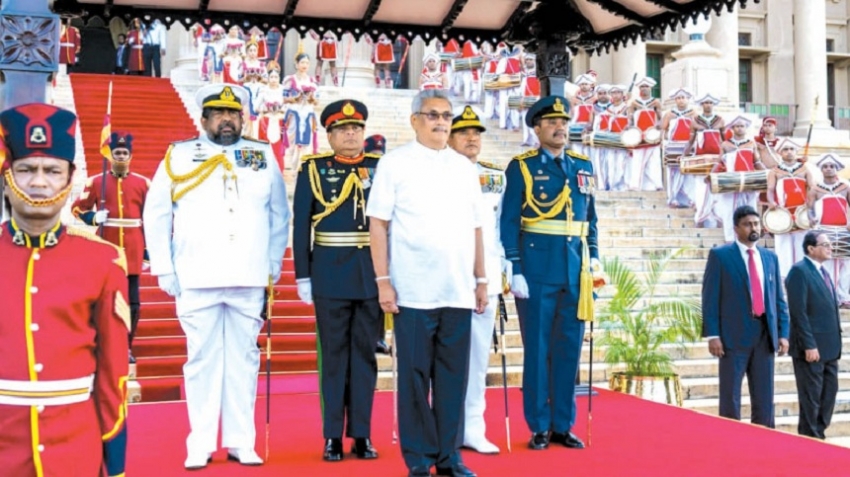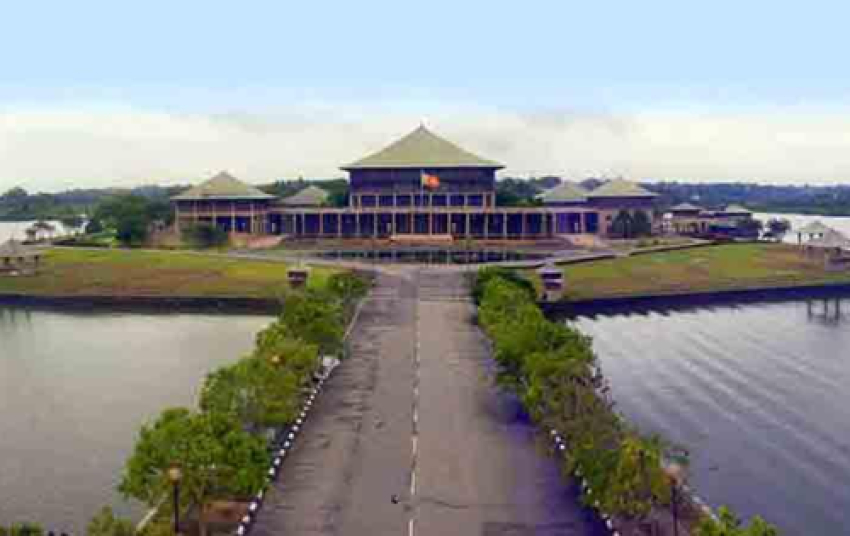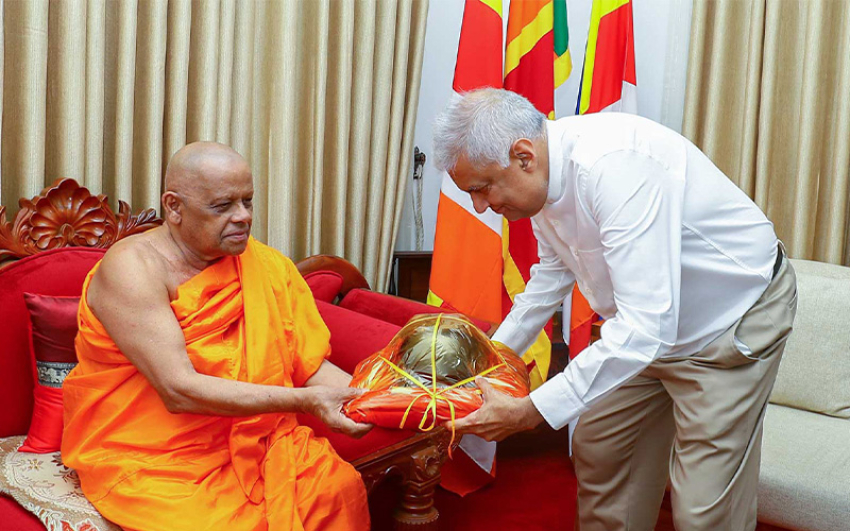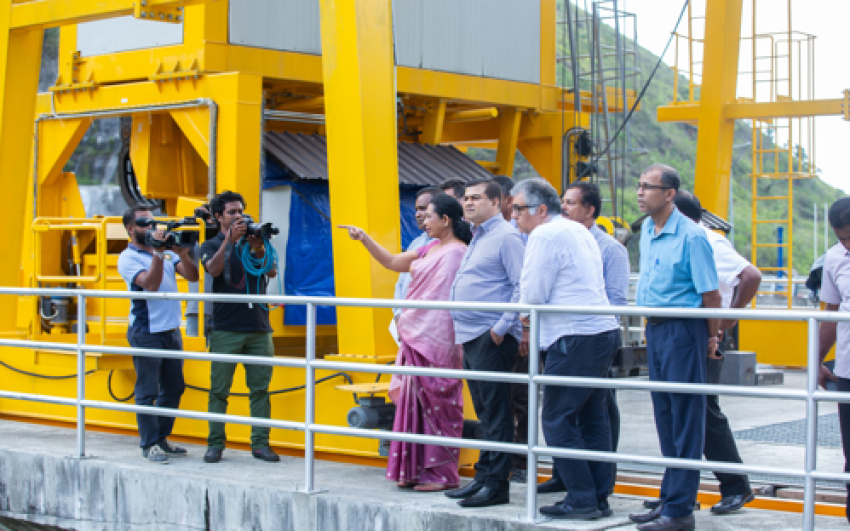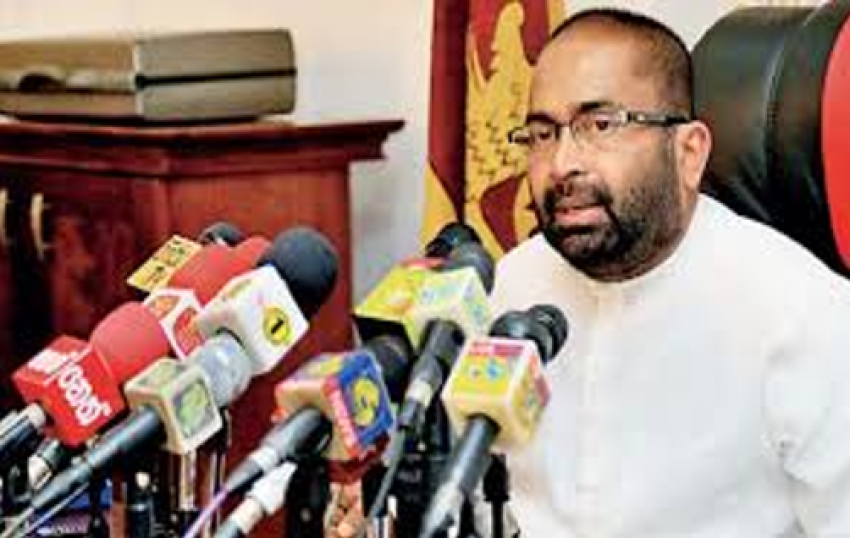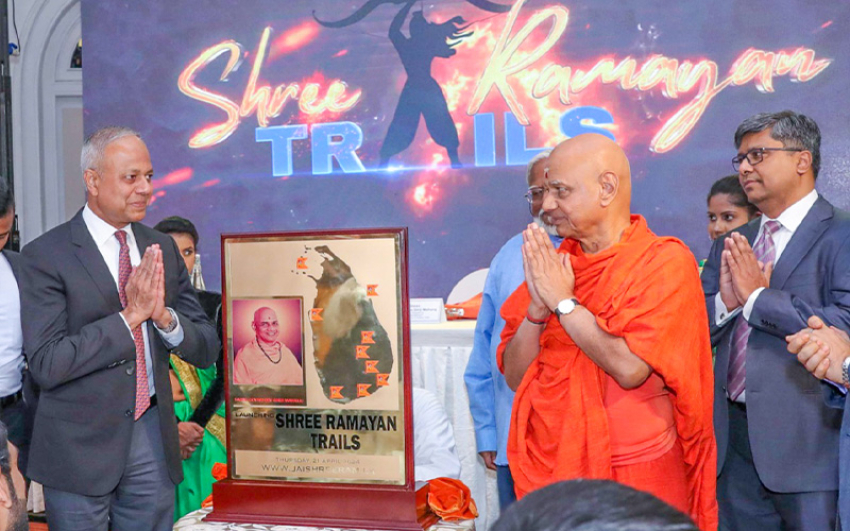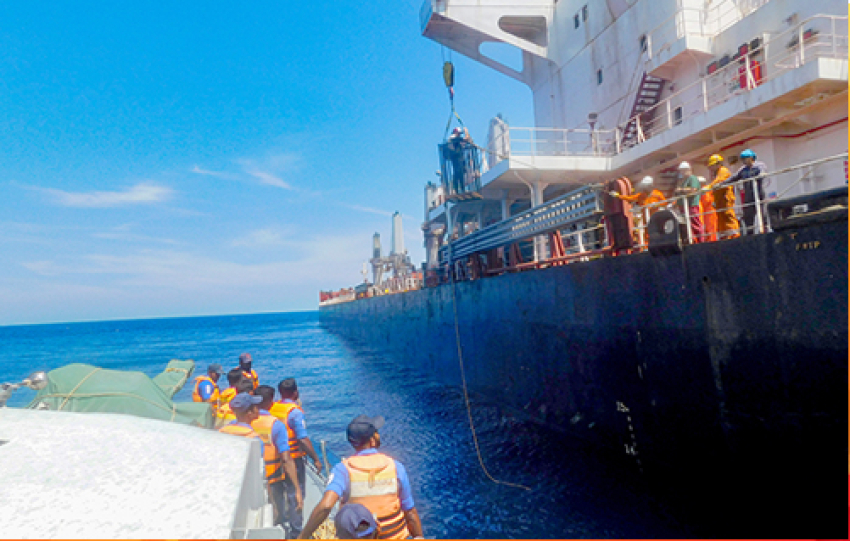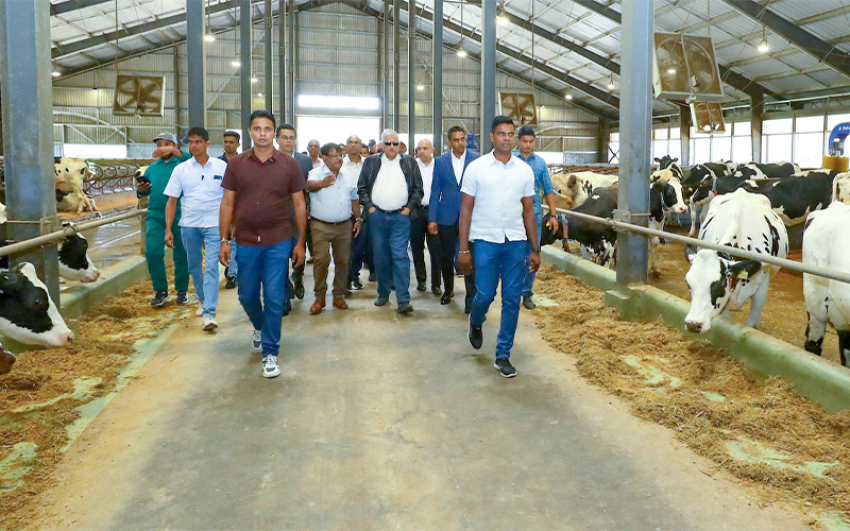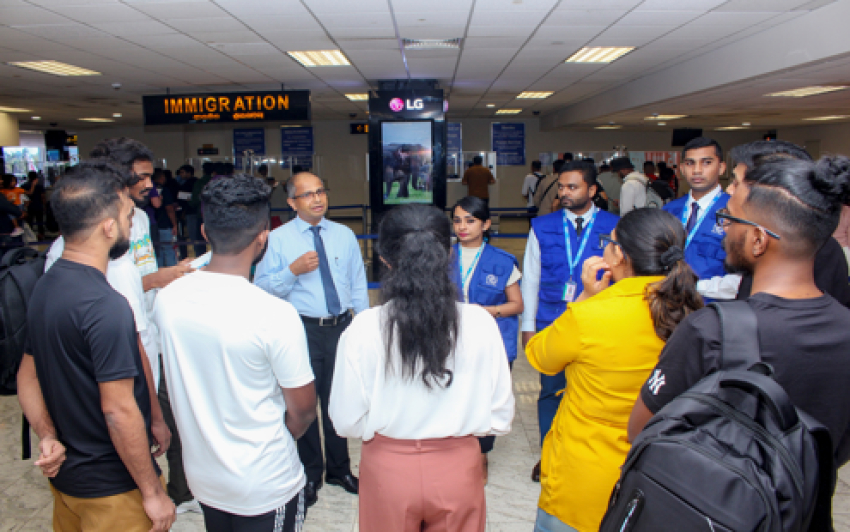Dr. Sunil Jayantha Nawaratne
I define “Gota-nomics”/ “Gota-ism” as the new thinking and way of doing things, principles and policies seems the president is following to run the country as a whole. If those new things related to economy, administration and management I call it “gota-nomics”. If those changes are related to political system and administration I call it as “gota-ism”.
The main principles of the “Gota-nomics” and “Gota-ism” are as follows:
1. People do not want “politicians” like president, PM, ministers, secretaries, chairman/DGs or organisations like ministries, departments or corporations but “effective, efficient, speedy and cost effective solutions” to their burning issues at the national, regional, organisational or even personal level. The politicians who resolve those issues are popular while others are not at all. We had several ex-presidents but we respect only few. Why MR or GR are so respected by the people, is they ended the war and developed infrastructure and facilities for the general public. But most of the politicians do not understand that and they see the world and act based on “people want politicians” mindset and paradigm but it is wrong. New president has clearly understood the fact and working on the new paradigm that is “people do not want politicians or organisations but the effective and speedy solutions to their problems”. The main reason why “Yaha-palana” government was defeated, since they still believe that people need politicians not the solutions.
2. In an election getting votes as “a Loan” not as “a Gift”: In an election, the candidates are getting votes and/or preferences from the voters as a “loan”. Once we come to the power we have to “settle that loan” by fulfilling the promises and giving solutions to their issues. If we don’t settle those loans in-full, you will not get the votes again. Most of the politicians do not think that way. They think “vote as a gift” to the politicians not as a loan. But Mr. GR believes and follow it from the very first day.
3. Most of the politicians find solutions in “reactive” manner, while GR is “proactive” to resolve the burning issues like poverty and education. That’s why he has taken action to increase national schools from 353 to 1,000 and recruit 100,000 uneducated youth from poor families to reduce poverty. That means before the problem comes we get ready to face the problem in a positive manner.
4. We normally do “incremental changes” and expecting quick results. But GR is introducing “drastic change” or “radical changes” to the system to improve the effectiveness and efficiency. Example: no VIP gates for politicians, no family members to the private staff of the ministers, no road blockage for president, PM or ministers, no ad hoc appointments to the top-posts of the corporations and public entities but from honest, pragmatic, professionals, all A/L pass students can obtain a degree, all teachers to be converted as graduates, all technical colleges and “vidya-peeta” to be converted as degree awarding institutes.
5. “Input based management” vs “outcome based planning and management”. Most of the time, public sector allocate money and find only how that allocated funds have been spent. But GR is focussing on both “input as well as output/outcome/results” of the respective organization or ministry. By spending that money and other resources what are the results or outcomes we have/should be achieved? Like how many families have graduated from poverty, how many farmers have increased their monthly income and by how much? Etc.
6. “Donkey democracy” vs “Disciplined democracy”. We used to enjoy democracy without any limitation or responsibility. But we need well disciplined democracy to develop our nation. Under the name of democracy, no one should tarnish the name of our country’s name and future or spread false and misleading gossip.
President GR is following the disciplined democracy paradigm I guess, which I gathered from his actions.
7. “Isolated approach” vs ‘Integrated approach”. With the traditional way of doing things we had a government dominant development approach through promoting “dependency syndrome”. Means, we were thinking that our country should develop under the external experts (WB, IMF, ADB, US-Aid etc) guidance, help, funding and advice. The new paradigm is “Yes we can” and based on our core-competencies we have developed the “National Development Strategic Plan” (NDSP), using our own expertise and based on that any friendly nation, donor agency or investor can support to implement that our NDSP. Dr P.B. Jayasundara, President Secretary (former finance secretary) is an expert on this subject and he knows how to develop our own plan and how to obtain others support very well. As my observations, our new president’s stance is a new integrated approach with “4Ps” and details are as follows:
a. If the economy is like a vehicle it has four main components: Engine, Gear-Box, Wheels and the Driver with a good vision. New president is using this vehicle concept to drive our economy forward in correct speed through synergizing all 4 sectors like, Private, Public, People and Political sectors well for our national development.
b. In our economic vehicle:
i. Private sector - is the engine - But our engine is line a “motorcycle engine” and not powerful enough and it has to be converted as a powerful Turbo-engine to take the nation forward with more innovative approaches to win the global market too. All companies should work as “socially responsible corporate citizens” to achieve our national goals together with new visionary leadership while making reasonable profits and expanding their operations locally and globally. I think president GR has clearly understood the value of the engine and the importance of making them empowered.
ii. Public sector - is the gear-box - Sri Lanka has a huge gear-box but it is not functioning well take the vehicle forward. Present gear-box is not coupled with the engine well. Isolated and independent operation of both engine and gear-box is not meaningful at all. Now we can see both engine and gear-box working towards alignmenting well. Public sector should create a conducive environment for the smooth running of private sector and up-coming entrepreneurs by providing better, consistent and non-conflicting policies and incentives, simple rules and regulations and tax systems as well as quick decisions. For example, under the new president many tax concessions are given to the private sector with very conducive policies etc. Also, public sector will be revamped to make it effective and efficient to deliver results in speedy manner. Each ministry will be given clear goals and objectives to be achieved and process and results will be continuously monitored.
iii. People sector - is the wheels of the economy and our people sector is not that positive and supporting towards national development yet and they expect too much from the government and I would like to call it “dependency syndrome”. But we need a “positive” and “independent” as well as the “development oriented” people sector who think “Yes-We -Can” to achieve our national vision. Mindset of the people sector has to be shifted towards new directions. Under the new president’s leadership it is happening among the youth already. For example - nation-wide painting campaign, tree planting movements and paddy cultivation are good starts even without president’s guidance or instructions. Now it’s high time to change total mind set of the nation towards our new vision.
iv. Political sector - is the visionary leader and the driver of the vehicle.
“A country without a vision is like a ship without a rudder.” After independence very few leaders had a vision for the country. During 2005-2015 former President Mahinda Rajapaksa had a vision for Sri Lanka: “to be the miracle of Asia”. But from 2015 our country didn’t have a clear visionary leadership and hence the ship floated hear and their without a clear vision, destination and long-term direction. Now the new president has published an “inspiring vision” in his manifesto: “Surakshitha Hetak, Saubhagyamath Ratak” and all other three above sectors working towards to achieve that common vision from now on. This new shared vision should be adopted and inculcated among the PM office and other ministries too.
v. I have a strong confidence that new president is having this new approach to lead all three sectors as the visionary driver of the vehicle forward with a clear destination, direction and appropriate speed.
i. On top of this “media including social media as well as the opinion leaders” of the society should operate as “social auditors” or the signal lights and the traffic police of the vehicle on the development road. If the vehicle is breaking rules, any component is not functioning well or need any modifications to drive faster towards the national vision and policies it should be high-lighted with the “developmental criticism mindset” with correct facts and evidence as new president stated in a press briefing with all the media heads.
8. “Ad-hoc, emotional decision making” vs “Professional and scientific decision making”. The traditional decision making method was very unscientific and emotional and hear-say based decision making method was adopted. But now we can see more “evidence based”, “data driven” and “scientific and logical” decision making system is followed under the new president GR. For example: 15 member cabinet and subject allocation and distribution of institutions, process to appoint the heads of government institution etc can highlighted during the last 3 weeks, 1,000 national school proposal etc.
9. “Non-strategic” vs “strategic thinking and management” approach. During the last 5 year period, we experienced the first mindset based situation and now we can see more and more strategic thinking and management process based approaches are adopted by the president and his team. We can see a clear vision, mission, goals and objectives of the government with innovative and pragmatic strategies to resolve the issues of the economy, systems, people, society and the various sectors. Firstly, national level plan has been formulated and it should be distributed among the ministries with clear goals and specific SMART objectives and KPIs. Each respective minister and secretary should be responsible to achieve those goals and objectives under the results based planning and management system.
10. “Not who is correct” but “What is correct”
Especially in the Political sector and in the Public sector our decisions were made based on “who is correct” paradigm. Which means if President, Minister or Secretary say something everyone accept and implement it blindly and without questioning it. Most of the Yahapalana government decisions are good examples. Most of the time, those decisions were taken on emotions or hear-say and without much scientific analysis, and finally we didn’t get the expected results.
But now we can see the new president work on “what is correct” paradigm, means first he decides the Vision, Mission, Goals, and Objectives as well as the policy framework. Then with the support of data, scientific approach and analysis and expert advice and participation they select the most appropriate alternative solution to achieve the goals and objectives. In other words, first decide the objective clearly and then they find the best alternative to achieve/reach that objective through team and expert participation. For example: recruiting 100,000 youth from poor families from all the villages in the country to reduce poverty. The objective is “poverty reduction” and strategy is “recruiting 100,000 youth from poor families” only. Expand the national schools from 353 to 1,000 is another very good example.
As I explained above, it’s clear that Sri Lankan political culture is changing drastically based on new paradigms and mindsets. There are many more novel approaches and viewpoints to add but due to space issue I would like to conclude this my first article giving following concluding remarks.
Sri Lanka was waiting for a drastic change. After 71 years that process has been started under the first non-political president or technocratic President Gotabaya Rajapaksa. He gives the highest priority to the “Country and People” and he has clearly understood that people don’t want “politicians or organisations” but “effective, efficient, speedy and cost-effective solutions to the problems we face.” He has a “Vision with a national plan” and he is going to achieve his vision, goals and objectives through - Private, Public, People and Political sector’s integrated participation. For that all parties in the system should understand and accept his philosophy, policies and principles based on his new world view. He sees the things and the world in a completely different and novel way and in brief it’s called “Mindset and Paradigm”. Now the biggest challenge he faces is to shift the all others Mindsets and Paradigms from older views to this novel approach. For that we need a special project called “shifting Paradigms”.
(The writer is a former Secretary, Ministry of Higher Education. Email: This email address is being protected from spambots. You need JavaScript enabled to view it.)

